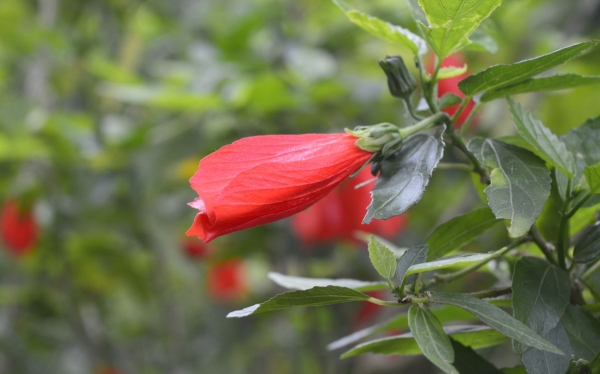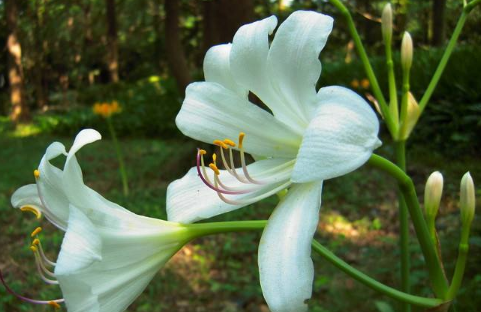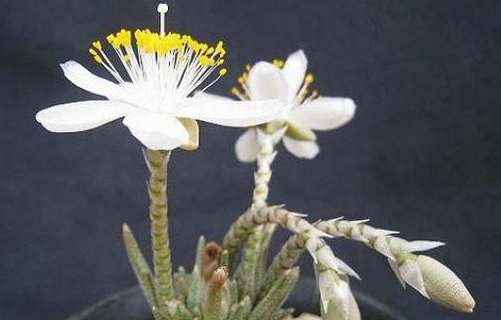Culture method of Platanus orientalis
Soil
Platanus orientalis is suitable for growing in fertile, well-drained sandy soil, and it is best to plant it in decaying soil.
Light
The hanging bell flower likes the warm and humid environment, it is not resistant to cold, so put it in an environment with plenty of light. In this way, the growth of the plant can be more dense, if the light is not enough, it will affect flowering and lead to slow growth.
Temperature
As the Platanus orientalis is heat-resistant and not cold-resistant, the lowest temperature of breeding should not be lower than 8 degrees Celsius. High temperatures in summer should prevent the sun from being exposed to the sun and prevent the leaves from being burned.

The maintenance of Platanus orientalis is relatively simple, it has many efficacy and high medicinal value, so plant a pot at home as soon as possible. If you want to know more, please pay more attention to the four Seasons Plant Network!
Culture method of Platanus orientalis L. Propagation method of Platanus orientalis
Platanus przewalskii, a plant of the genus Platanus of Malvaceae, native to Mexico and Colombia, is going to share with you today the knowledge of how to cultivate and propagate Platanus orientalis.
The Culture method of Platanus orientalis
The hanging bell flower often escapes in the tropics and subtropics of Asia and Africa, and is mostly planted in the courtyard in South China. Platanus orientalis has loose soil requirements and good moisture resistance. It blossoms throughout the year, but the number of flowering in winter is relatively small.
Dangling flower is strong, like high temperature, wet and sunny environment, heat-resistant, drought-resistant, barren-resistant, frost-resistant, moisture-resistant, slightly shade-resistant, avoid waterlogging, and grow fast. It is suitable to grow in fertile, loose and slightly acidic soil with good drainage, and the winter temperature is not lower than 8 ℃. The soil is moist and sunny in midsummer, but it should be protected from hot sun and resistant to pruning.
The hanging bell flower is slightly like hibiscus in appearance, but the leaves are narrowly green; the flowers are not as full as other hibiscus, the bright red petals spirally curl, showing a hanging bell, the pistil and stamens are slender and protruding from the outer bud, the petals are slightly left-turned, do not open bract, fish red, leaves broad heart-shaped, shallowly bifid or angular.
The flowers hung down. Leaves stipitate, alternate, apical, long elliptic-shaped, apex acuminate, coarsely obtusely serrate, main leaf veins palmate, with five to seven veins. Green. Leaves come out throughout the year, especially from March to August.
Propagation method of Platanus przewalskii
The propagation of Platanus orientalis is mainly by cutting, but also by grafting or high pressure.
The cuttage of Platanus orientalis is usually available in spring, summer and autumn, and it is the best from March to May. The young shoots with strong growth should be selected for cuttings, and the seedling rate of 1-2-year-old branches is the highest. Cut 10-15 cm long branches to do cuttings, do not need any treatment, insert in the sand bed, keep moist, generally do not need a month to take root, the survival rate can reach more than 80%.
How to raise Platanus orientalis? the cultivation method of Platanus orientalis
How to grow dangling flowers? It is a matter of concern to flower friends. Platanus orientalis is very good-looking and easy to raise. It is often used as a garden decoration flower plant. Of course, it can also be raised in the courtyard. Platanus orientalis is easy to breed in the courtyard, as long as we understand the matters of daily culture of Platanus orientalis. I hope that flower friends can master it and help to cultivate it better.
Culture methods of Platanus orientalis 1. Soil preparation requirements
How to raise the Platanus orientalis, first of all, understand that the Platanus orientalis does not have high requirements for the soil, and the basin soil should choose the soil rich in humus. It is required to be fertile, loose and well drained, slightly acidic.
2. Light and temperature
Dangling flowers like high temperature and humid environment and require plenty of sunshine. It is not cold-resistant and slightly shade-resistant. Platanus orientalis requires plenty of sunlight in the process of growth, so that the plant can grow healthily and have dense branches and leaves. Lack of light will affect the growth of plants, grow slowly, and even affect flowering.
Platanus orientalis is heat-resistant and not cold-resistant, the temperature will be higher in winter, the lowest can not be less than 8 degrees, in the summer high temperature, to prevent sun exposure, so as not to burn the plant.
3. Water quantity control
When watering the bell flowers, you should avoid watering the petals so as to avoid white spots. Fertilize once every semimonthly during the growing period. The soil remains moist in midsummer, with more sunshine, but to prevent hot sun exposure, spray water on the leaves sooner or later.
4. Water and fertilizer supplement nutrition and ventilation
Dangling flowers like a moist environment, but they are not resistant to waterlogging, so watering should be based on keeping the soil moist. Pay attention to waterlogging prevention in summer rainy season, timely drainage, evaporation is large when the temperature is too high, spray water to the leaves sooner or later to replenish water, autumn temperature drop should be controlled watering.
Platanus orientalis is fertilized once every semimonthly during the growing period. When the weather turns cool in autumn, fertilizer should be stopped and ventilation should be maintained.
5. Pest control
Leaf spot and powdery mildew often occur in Platanus orientalis, which is a fungal disease, which is caused by fungi. Fungi are a class of lower organisms without chlorophyll, with individuals of different sizes, most of which can only be seen under a microscope. The dead branches and leaves can be removed in late autumn or early spring and the diseased branches and leaves can be cut off and burned in time. Spray 65% Dysen zinc wettable powder 600 times before onset of the disease.
- Prev

Propagation methods of Lycoris radiata
The split propagation of Lycoris grandiflora can be carried out in spring and autumn. The mother plant is taken out of the pot and the bulb is peeled off and then replanted. The sowing and propagation of Lycoris radiata is generally carried out in March and April. Because of its high seed water content, it is necessary to pick and sow immediately. Sow on demand in a flowerpot and cover two centimeters of soil
- Next

How to raise White Flower tenderness Brocade
1. Planting soil if we are cutting white flower brocade, we need to choose loose and fertile soil, and in order to prevent stagnant water and root respiration, our soil also needs to have good drainage and ventilation, so that the basin soil will not have stagnant water, and the roots can breathe normally.
Related
- Fuxing push coffee new agricultural production and marketing class: lack of small-scale processing plants
- Jujube rice field leisure farm deep ploughing Yilan for five years to create a space for organic food and play
- Nongyu Farm-A trial of organic papaya for brave women with advanced technology
- Four points for attention in the prevention and control of diseases and insect pests of edible fungi
- How to add nutrient solution to Edible Fungi
- Is there any good way to control edible fungus mites?
- Open Inoculation Technology of Edible Fungi
- Is there any clever way to use fertilizer for edible fungus in winter?
- What agents are used to kill the pathogens of edible fungi in the mushroom shed?
- Rapid drying of Edible Fungi

